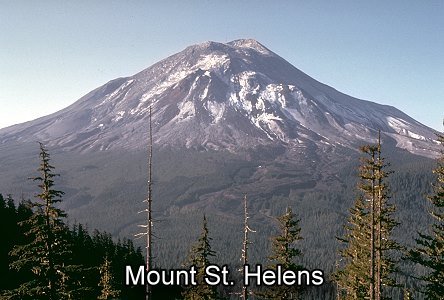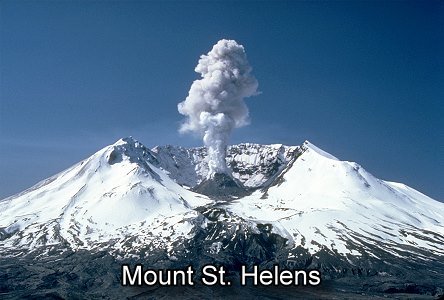Special Days Every Month
Celebrate and learn about special days
every day of the year!
|
Mount St. Helens
|
|
Mount St. Helens is an active Composite volcano located in Skamania County, Washington, in the Pacific Northwest region of the United States. (Composite volcanoes are also known as strato-volcanoes.)
On 18 May 1980, Mount St. Helens’ eruption was the deadliest and most economically destructive volcanic event in the history of the United States. Fifty-seven people were killed; 250 homes, 47 bridges, 15 miles (24 km) of railways, and 185 miles (298 km) of highway were destroyed. Why was Mount St. Helens’ eruption so devastating? Like other Composite volcanoes, Mount Helen had steep-sides composed of many layers of volcanic rocks, made from thick sticky lava, ash and rock debris (broken pieces). The magma inside was thick and sticky (like honey), meaning that the gas could not escape, so instead the gases inside built up and up until it exploded sending out huge clouds of burning rock and gas. The explosion caused a massive debris avalanche, reducing the elevation of the mountain’s summit from 9,677 feet (2,950 m) to 8,365 feet (2,550 m) and replacing it with a 1 mile (1.6 km) wide horseshoe-shaped crater.
See what Mt. St. Helens is doing right now Also on this day … 18 May 1991: Britain’s first astronaut, 27-year-old Helen Sharman from Sheffield, blasted in to orbit
|
See Teaching Resources for today’s date
Back to Facts of the Day Calendar
Jan | Feb | Mar | Apr | May | Jun | Jul | Aug | Sept | Oct | Nov | Dec
 © Copyright – please read © Copyright – please read All the materials on these pages are free for homework and classroom use only. You may not redistribute, sell or place the content of this page on any other website or blog without written permission from the . projectbritain.com | primaryhomeworkhelp.co.uk |
© Copyright 2013
is the creator of the Woodlands Resources section of the Woodlands Junior website.
The two websites projectbritain.com and primaryhomeworkhelp.co.uk
are the new homes for the Woodlands Resources.
left Woodlands in 2003 to work in Kent schools as an ICT Consulatant.
She now teaches computers at The Granville School and St. John’s Primary School in Sevenoaks Kent.
Woodlands Junior Homework Help new website
born on this day what happened on this day famous birthdays interesting facts did you know Interesting Calendar Facts.







